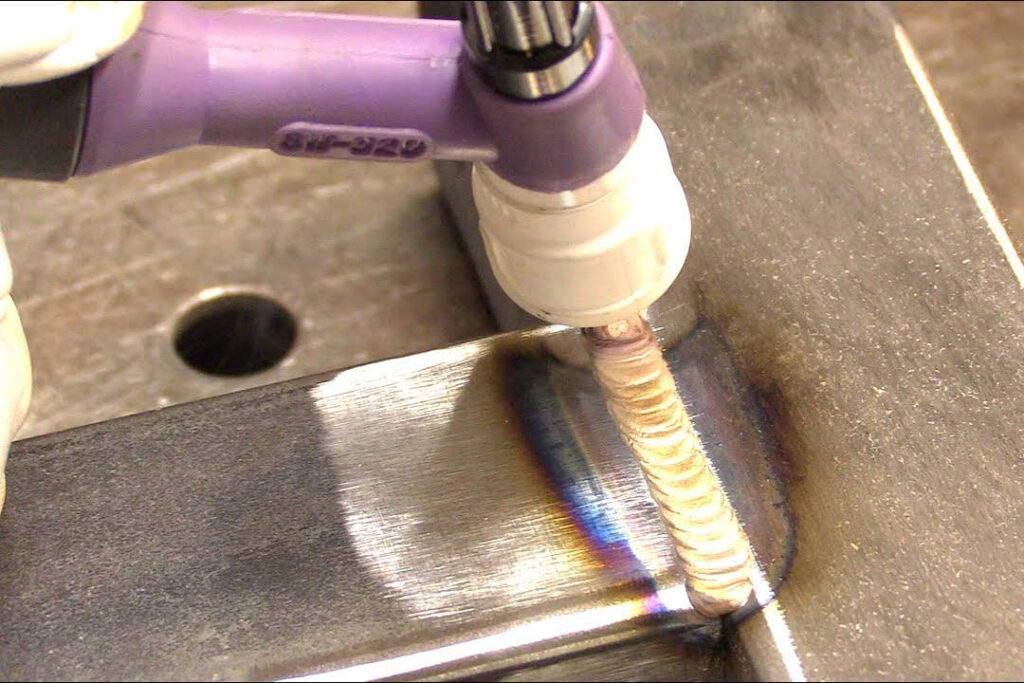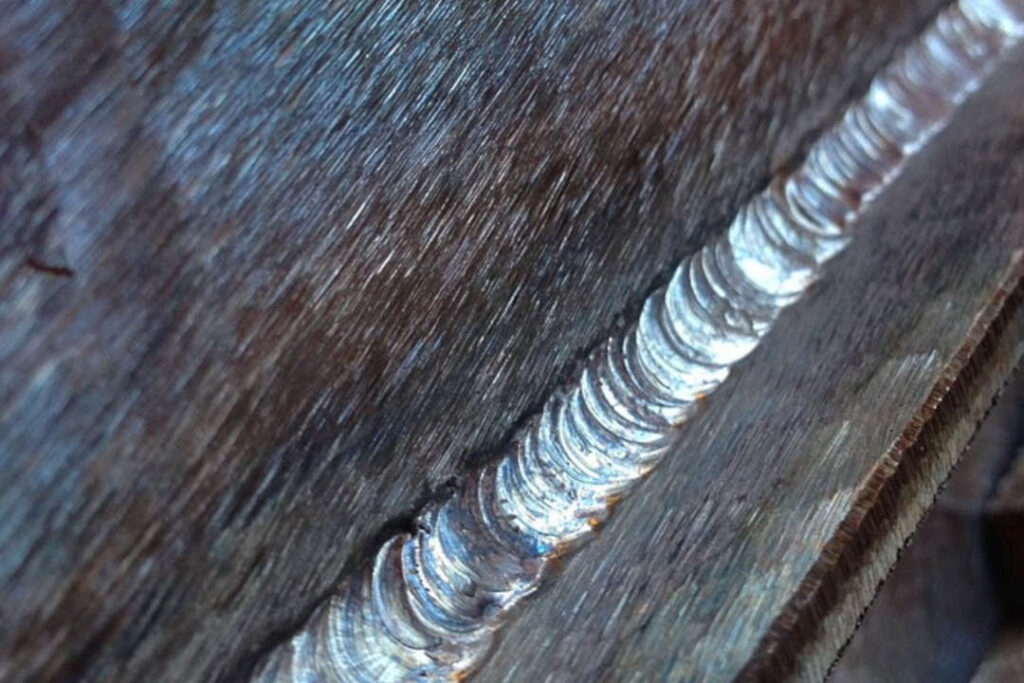TIG Welding | What is TIG Welding and How Does it Work?
The Gas Tungsten Arc Welding (GTAW) process, more commonly known as TIG welding, is a manual welding process that uses tungsten inert gas (TIG) to protect the weld from oxidization and contamination. A TIG welder uses either a continuous or pulsed arc to fuse metals. This process is often preferred by welders because of its versatility. A TIG welder can weld almost any metal, including stainless steel, aluminum, brass and copper. The TIG welding process has been used for over 100 years. It was invented in 1885 by George Westinghouse, who also invented the first electric motor. In the early 1900s, it became popular among shipbuilders as an alternative to oxyacetylene welding.
The TIG welding process is similar to MIG welding except that the filler wire is fed into the weld puddle instead of being held in a separate hand-piece. The TIG welding torch is connected to a power supply that provides the electrical current needed to create the arc between the electrode tip and the work piece. The arc melts the filler material and transfers heat to the surrounding area. The filler material is then deposited on top of the molten pool created during the previous pass.

There are two types of TIG welding: stick welding and automatic welding. Stick welding requires the use of a handheld torch with a long rod-like electrode. Automatic welding involves using a robot arm to position the torch and deposit the filler material.
In addition to welding, there are other applications where TIG welding is useful. For example, TIG welding is commonly used to repair damaged parts of automobiles. It is also used to join pipes together.
TIG welding produces a high quality weld and is very versatile. However, it does have some drawbacks. One drawback of TIG welding is that it is slow. Another drawback is that it is difficult to control the amount of filler material that is added to the weld.
TIG Welding -Equipment
A welding torch with a non-consumable tungsten electrode, a constant-current welding power supply, and a shielding gas source are all necessary for the gas tungsten arc welding process.
List of TIG Equipment
Welding Torch
A welding torch is the most important tool in TIG welding. It must be capable of providing enough energy to melt the base metal and provide adequate penetration. It should also be able to direct this energy to the desired location.
There are many different styles of torches available. Some are designed to fit directly onto the end of a welding gun while others require a separate holder. You can also attach gas lens kits to help focus and control the gas to get better gas coverage.
Most welding torches come equipped with a cable that connects them to the welding power supply.
Electrode
An electrode is a device that delivers electricity to the weld. Electrodes can be made out of various materials such as carbon, graphite, or tungsten. They are usually attached to a welding cable. The type of electrode you choose will depend on what kind of metal you are welding. Carbon electrodes are best suited for mild steel. Graphite electrodes are good for welding cast iron. Tungsten electrodes are best for welding thicker metals like stainless steel and nickel.
Only when welding thin materials do electrodes need to be ground to a point. Electrodes have diameters of 0.5, 1.2, 2.4, 3.2, 4.0, 4.8,5.6, and 6.4 mm, with zirconated electrodes available in extra sizes for 1%. Thoriated electrodes with diameters of 0.8, 8.0, and 9.5 mm
Welding Cable
A welding cable is a flexible cord that connects your welding equipment to each other. Many cables are made up of multiple wires twisted together. These wires carry the electricity that powers your welding equipment. Cables are typically rated by their amperage. Amperage is the amount of electricity flowing through the cable at one time. You need to know the amperage rating of the cable before purchasing it.
Shield Gas Source
When welding, you need to keep the atmosphere around the weld clean so that it doesn’t contaminate the weld. To do this, you need to add an inert gas called shielding gas to the air around the weld. Shielding gases are classified according to their composition. Argon is the most common shielding gas. Other gases include helium, hydrogen, nitrogen, oxygen, argon/oxygen, and argon/hydrogen.
Gas Regulator
A regulator is a device that automatically reduces pressure and controls the flow of compressed gases through valves. When welding, you need to regulate the flow of shielding gas into the area where you are working. The flow rate of shielding gas depends on how much heat you want to create during the welding process. If you don’t want too much heat, then you may not need to use as much shielding gas.
Gauge
A gauge is used to measure something. In this case, it’s used to measure the thickness of the weld. Gauges are measured using a scale that goes from zero to 100. Zero represents no thickness and 100 represents full thickness. The gauges are marked in increments of 0.1mm.
Power Supply
A power supply is required to generate the voltage and current needed to run your welding equipment. Power supplies come in two varieties: AC power supplies and DC power supplies. An AC power supply provides alternating current. Alternating current is the type of current found in household outlets. A DC power supply generates direct current. Direct current is the type of electrical current found in batteries.
TIG Welding – Power Source
TIG welding requires a low, constant current power supply, either Direct Current (DC) or Alternating Current (AC). To prevent excessively large currents being drawn whenever the electrode is short-circuited on the work material, a constant current power supply is required. This might occur intentionally during arc beginning or accidently during welding. If a flat characteristic power source is employed, as in MIG welding, all contact with the work material will harm the electrode tip or melt the electrode to the work material.
Because arc heat is dispersed around one-third at the cathode (negative) and two-thirds at the anode (positive) in direct current (DC)t, the electrode will always be of negative polarity to avoid overheating and melting. However, using the other power source attachment of DC electrode positive polarity has the benefit of cleaning the surface of oxide contamination when the cathode is on the work material. As a result, when welding materials having a persistent surface oxide deposit, such as aluminum, AC is utilized.
TIG Welding – Shielding Gas
Shielding gas is chosen based on the material being welded. The following recommendations may be useful:
Argon
Argon is he most often utilized shielding gas for welding a variety of materials such as steels, stainless steels, aluminum, and titanium. Argon is nonflammable and relatively inexpensive.
Agon/Hydrogen Mixtures
Mixing Argon + 2 to 5% H2 . The addition of hydrogen to argon will make the gas slightly reducing, assisting the production of cleaner-looking welds without surface oxidation. As the arc is hotter and more constricted, it permits higher welding speeds. Disadvantages include risk of hydrogen cracking in carbon steels and weld metal porosity in aluminum alloys.
Helium/Argon Mixtures
Helium is less expensive than argon but is flammable and toxic. Heavier gases like argon and helium do not require special precautions.
The addition of helium to argon raises the temperature of the arc. This encourages faster welding and deeper weld penetration. The disadvantages of employing helium or a helium/argon combination are the high gas expense and the difficulty in igniting the arc.
Helium/argon mixtures are used for welding mild steel, stainless steel and aluminum. They produce a clean weld with no spatter.
Helium and helium/argon mixtures – adding helium to argon will raise the temperature of the arc. This promotes higher welding speeds and deeper weld penetration. Disadvantages of using helium or a helium/argon mixture is the high cost of gas and difficulty in starting the arc.
Typical argon helium mixtures:
- 100% Argon generally the most common and coolest
- 75% Argon/25% Helium most common argon helium mix
- 75% Helium/25% Argon this is the hottest gas, with a higher percentage of helium the disadvantage is there can be problems with arc starting issues
- 100% Helium; this makes it difficult to start arc, very hot temperature.
Advantages of TIG Welding
The TIG process works on nearly all metals especially those with relatively high melting points and TIG is the most common method for welding aluminum, stainless steels, and nickel-base alloys is .
It is not often utilized for metals with extremely low melting points, such as solders or tin, lead, zinc alloys. It is particularly beneficial for connecting aluminum and magnesium, which generate refractory oxides, as well as reactive metals such as titanium and zirconium, which dissolve oxygen and nitrogen and become brittle when exposed to the atmosphere while melting. It is also employed in the welding of cast iron, ferrous metals and stainless steel.
TIG provides accuracy and control in welding ‘to a tee’. Because the arc heat and filler metal are individually regulated, the technique allows more accurate control of the weld than any other arc welding procedure. It strengthens the joints. It creates high-quality welds in practically all industrial metals and alloys and the beads tend to be much neater than other welding processes.

TIG can be used in conjunction with metals of different thickness be they very thin metals (amperage range of 5 to 800, (the electricity created by the welder). As such, TIG is very good when looking to join thin base metals due to the ability to fine control the heat input.
Disadvantages of TIG Welding
TIG welding requires a skilled operator who understands how to use the equipment properly and can be more costly than the other alternative procedures. TIG welders have substantially greater welding costs than MIG welders since the process is slower. Low deposition rates must also be managed, which are measured in pounds-per-hour deposited at a certain welding current. When you choose this option, you can eliminate maintenance costs and the cost of obtaining new wire, but this is offset by the cost of the rods you must purchase.
Contamination concerns might arise as a result of inadequate gas coverage. Contamination concerns might arise when the shielding gas does not provide adequate coverage during the TIG welding process. If there is too little or too much, the aesthetics might suffer significantly. Even if your ratios are good, the shielding gas could be blown away with wind.
In addition the TIG welding produces can produce noxious fumes that contain potentially harmful substances. These fumes must be removed from the area where welding takes place.
Gasless TIG Welding
Gasless TIG welding is a variation of Tungsten Inert Gas (TIG) welding that does not require an external shielding gas to protect the weld from contamination. Instead, a flux-cored electrode wire is used to provide a shielding gas through a chemical reaction that occurs when the wire is heated.
This process is also known as TIG Flux corded welding. The flux creates a protective shield around the weld pool, preventing contamination from the surrounding air. Gasless TIG welding is commonly used for outdoor welding applications, such as in construction or repair work, where it may be difficult or impractical to use external shielding gas. However, it is generally not recommended for high-quality welds or specialized applications, as it can produce inferior welds compared to gas-shielded TIG welding.
Summary
A TIG welder uses either a continuous or pulsed arc to fuse metals. A TIG welder can weld almost any metal, including stainless steel, aluminum, brass and copper. The TIG welding process is similar to MIG welding except that the filler wire is fed into the weld puddle instead of being held in a separate handpiece. The TIG welding torch is connected to a power supply that provides the electrical current needed to create the arc between the electrode tip and the work piece.
The arc melts the filler material and transfers heat to the surrounding area. The filler material is then deposited on top of the molten pool created during the previous pass.
Further Reading
- Universal Technical Institute: What Is TIG (GTAW) Welding
- Journal of Materials Processing Technology: TIG welding with single-component fluxes

I’ve been involved in the welding industry for over twenty years. I trained in various engineering shops working on various projects from small fabrication and repairs through to industrial projects.I specialize in welding aluminum and food grade stainless steel and an now run an engineering shop fabricating equipment for the food industry.